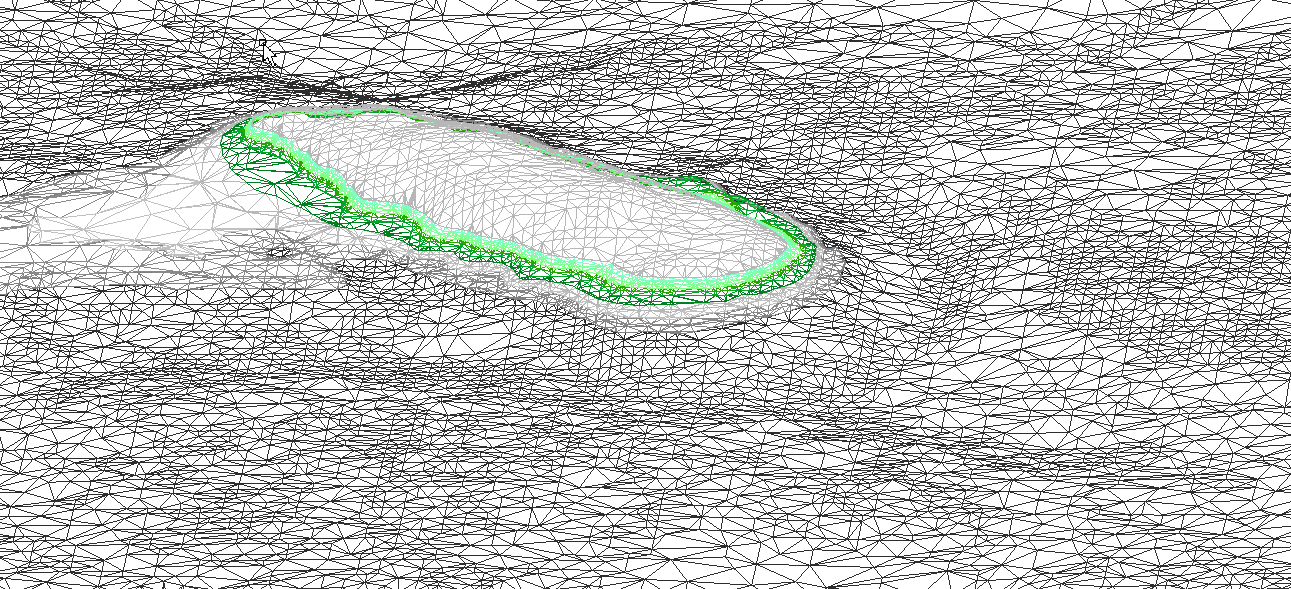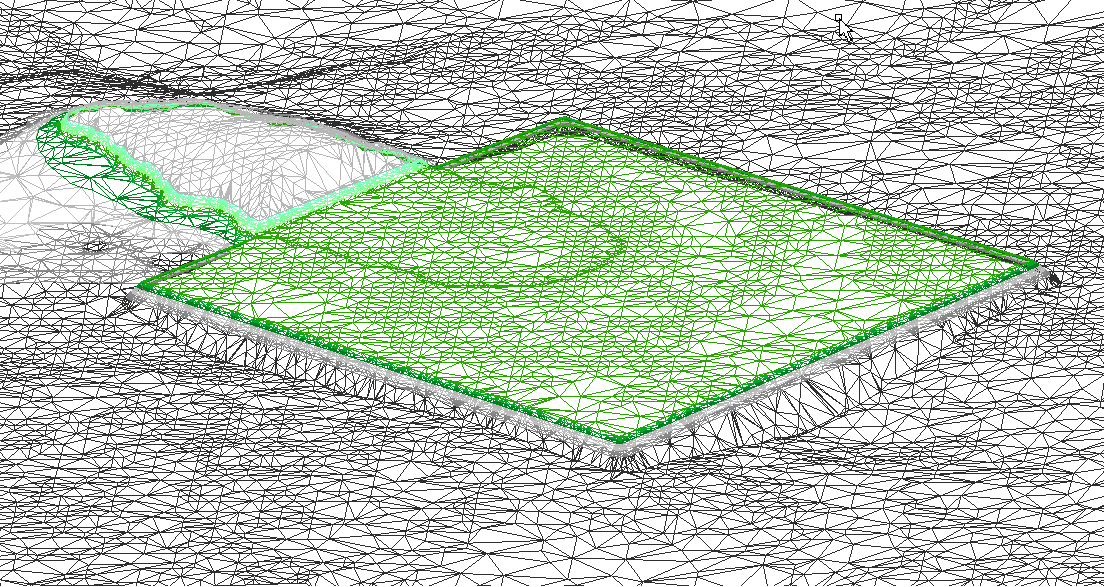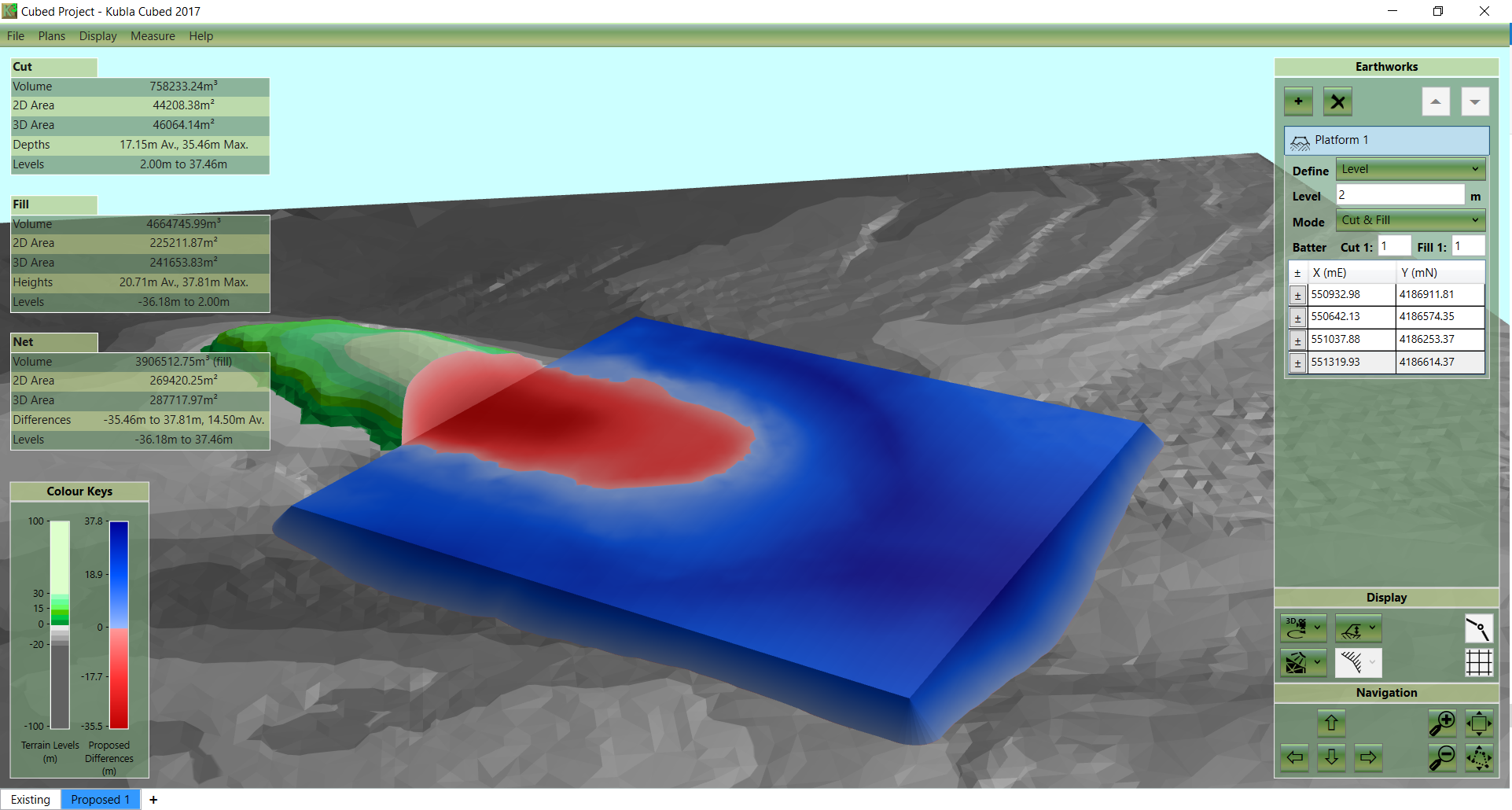How Do I Figure Yardage Off Of Cut And Fill Line On Civil Drawings
The third method that is commonly used to calculate earthworks volumes is the triangular prisms method. This is by far the most technically hard method, but is also the about accurate.
This method starts by triangulating the existing terrain. This involves joining the points in the terrain to create a continuous surface of connected triangles. This is known as a Triangulated Irregular Network, or Can for short. This pace is repeated for the proposed terrain.
The next stage is to merge these two triangulations, to create a 3rd triangulation which contains all the edges of the original triangulations. This will exist used to perform the calculations, and merging the two input triangulations means that every detail of both the existing and the proposed volition be included in the calculations. This is the ground of this method'south accuracy.
The last stage is to summate the cut and make full of each vertex on the calculation TIN. These values can exist used to calculate the cut and fill for each triangle, and the full volumes are easily obtained by calculation all the triangles together.
Due to the bang-up complexity of these calculations and the thousands of triangles that are generated information technology is non applied to calculate triangular prisms past hand. Instead, these calculations are done with specialised software like Kubla Cubed. Nonetheless, it should be noted that not all earthworks software uses this method; some software calculations are based on automated high-density filigree calculations or the cross section method used in conjunction with TINS.
There are several cracking advantages to the triangular prism method. First and foremost, this method is the well-nigh mathematically consummate of the three. Since every particular of the existing and proposed terrain is retained in the merged triangulation nothing is lost in these calculations whereas all other methods take a certain degree of loss due to details falling within the density of the grids or cross sections.
Another advantage of this method is that you tin represent the finest level of item, even if a site is very big. Using both the grid and cross section methods you have to define the density of the grid squares or sections, and whatever particular that is within this spacing is liable to be lost. With the triangular prism method, on the other hand the finest level of detail can the represented even in very big sites, as having a high density of triangles in one area does not accept the knock on effect of requiring other areas of the site to accept the same particular. This means that even on a very big site you can stand for a small trench without any loss of accuracy.

Triangulation of existing terrain. Notation the smaller triangles in areas where more detail is required. The proposed surface is triangulated in the same mode.

Merged triangulation, which contains all the edges of the existing and proposed triangulations. The fact is key to the accuracy of this method, equally all the features of both surfaces will be represented in the calculations

A secondary benefit of any software-based solution is the speed of input and the ability to view 3d images to validate results.
Source: https://www.kublasoftware.com/how-to-calculate-cut-and-fill/
Posted by: pachecotreave.blogspot.com


0 Response to "How Do I Figure Yardage Off Of Cut And Fill Line On Civil Drawings"
Post a Comment